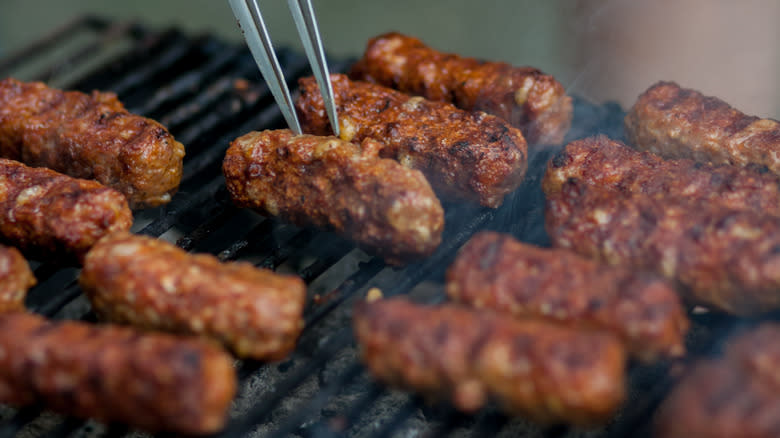What Are Romanian Grilled Minced Meat Rolls And How Are They Made?

Street food is a love language intertwined with culture, history, and taste. It's an unfolding of rich flavors, humble traditions, and local ingredients. Amongst the diverse street food available globally comes the Romanian grilled minced meat roll. Otherwise known as mititei or mici, it's a spectacular street food dish that's a testament to the glory of these local culinary delights.
The terms mititei and mici in Romanian translate to small or little ones, and that's precisely what these meaty cylinders resemble: small, juicy, minced meat rolls. Although this specialty can be found as a common street food, it's exceptionally popular during celebrations, and that's no surprise when their serving size is ideal for on-the-go or finger food at large gatherings.
Though their appearance might suggest simplicity in preparation, there's careful thought behind this dish. These rolls are made from a mixture of minced meat with a combination of spices, such as cumin and coriander, and seasoned with garlic and black pepper. Mici is made by kneading these ingredients together with the addition of water (or stock) and bicarbonate of soda before being formed into rolls. Achieving the ideal portion size is key for the rolls. If the rolls are too small, they'll dry out; too big and they'll snap. Once rolled, the mici are allowed to set before being grilled and ready to enjoy.
Read more: 11 Things You Didn't Know You Should Be Doing With Bacon
Tips On Technique

To create the best mici, there are a couple of boxes you want to check. The first concerns the meat. Mici are usually made from a mixture of meats such as beef, pork, and lamb. Meat that is fatty rather than lean is preferable, as this will produce the juiciest roll. This is also an excellent moment to familiarize yourself with the differences between ground and minced meat, as the texture will impact your final mici once grilled.
The next tip is to revive those spices with a pestle and mortar. Store-bought ground spices can be stale and unenthusiastic, lacking a tangible demonstration of the lively essence of the spice. However, grinding whole spices with a pestle and mortar yields an incredible unraveling of robust, earthy, and warm flavors -- perfect for mici that is deliciously aromatic.
Next, a note about the setting time: Once you've combined the meat, spices, and seasonings, it's ideal to leave the rolls to set overnight, or if this is not possible, then for at least two hours. This gives time for the flavors of the meat and spices to marinate with one another, which is crucial for achieving the tastiest rolls. Lastly, it's recommended that to capture the true deliciousness of this dish, it must be devoured with an ice-cold beer (although this is not compulsory).
A Meaty History

The origins of this meaty specialty are somewhat uncertain. Sources speculate that the invention of mici occurred during the Ottoman Empire (between 1300 and 1923), where it was likely inspired by a Turkish köfte and ćevap (a Turkish kebab). Others believe the mention of a delicious "small sausage" grilling in the streets of Romania in the 19th century provides evidence that this dish is much more recent.
However, a local legend tells of the first mici being created a century before in the steamy kitchens of a tavern tucked in the heart of Bucharest. The story speaks of the tavern's chef, who, running out of intestines to make sausages, kneaded the meat together into rolls instead. Although this tale has limited evidence, mici is believed to be a demonstration of culinary adaptability. Outside of Romania, other Balkan countries, such as Serbia, Greece, and Turkey, believe that mici actually originated from their regions. Still, there does seem to be a variation in key ingredients.
While pinpointing the origins of these divine meaty rolls may be challenging, acknowledging their savory excellence is not. If you get the opportunity to taste or create mici, dive in. They are a culinary delight not to be missed.
Read the original article on Daily Meal.


